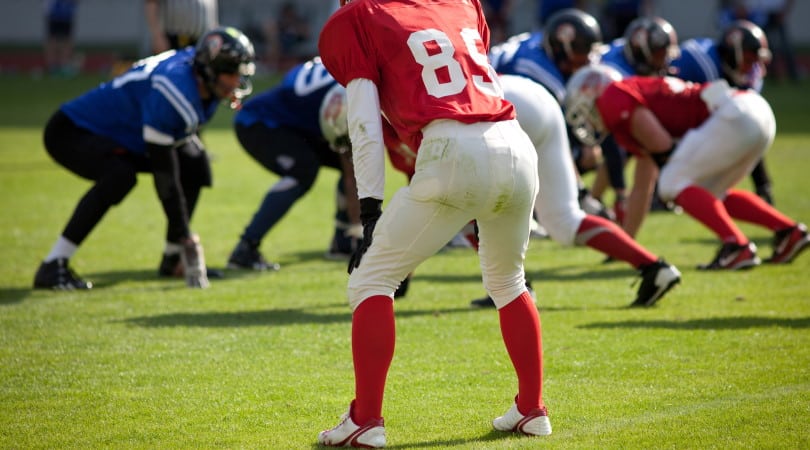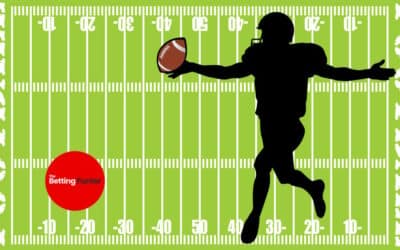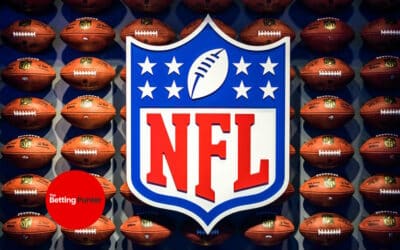Before watching or following any NFL game, you will often hear about a list of NFL inactive players. These are players who are unavailable for that specific game.
But why does the NFL have an inactive list, and what actually is it?
What does the NFL inactive list mean?
Player injuries will forever be a part of football. And throughout a long, gruelling season, several players will pick up minor injuries that are not severe enough to place them on the injured reserve list – but enough to keep them off the field for a week or two.
The theory is that forcing teams to remove six players from their roster each week will keep a balance. No team will be able to have a fully healthy 53-player roster against a banged-up team that may only have 45 players available, for example.
Capping the number of active players to 46 allows players with minor injuries to be made inactive for the week.
It allows teams to use some of their seven inactive player slots on players needing rest instead of being forced with the decision to release a player in order to field a fully healthy team. It protects against one team being healthier than the other.
The NFL inactive list essentially bridges the gap between a player being out for the entire season and a player needing a week or two to heal up.
How many inactive players can an NFL team have (rules)?

Despite NFL teams having a maximum roster size of 53 players, the NFL rules only allow teams to have a maximum of 46 players readily available for an individual game.
If a team has a full roster of 53 players, they must select seven players each week that will be scratched from the roster and cannot play. Those seven players become the inactive list.
This rule constantly divides fans, teams, and media alike. But the league has its reasons for keeping the rule in place. Competitive balance is the top reason cited in favour of the rule.
The Collective Bargaining Agreement
As the NFL adapted to playing through the pandemic, the league made many rule changes regarding roster sizes, player availability, and more.
But as we are passed that, the rule seems set in stone with the Collective Bargaining Agreement. As mentioned earlier, the maximum number of active players for a game is 46.
However, a rule allows teams to have an additional active player. If a team has eight active offensive linemen, then they can have a total of 47 active players and only have to list six inactive players.
Even if a team knows which players they will make inactive before game day, they must still travel to and from games with the team. For road games, inactive players will still be housed, fed, and accommodated as if they were part of the active gameday roster.
So inactive players still receive the same treatment as their teammates on travel and game days. The only difference being they don’t suit up and play.
What time do NFL inactives come out?
Teams must submit their inactive list to the NFL no later than 90 minutes before their scheduled kick-off time. So 11.30 ET for early window games and 2.30 ET for the later games on Sundays.
This gives both teams ample time to test the waters with some players with minor injuries while allowing sufficient time for game-planning.
Teams may wait to see how a player’s injury reacts during a warmup drill or see if they can do anything to counter the injury.
Sometimes teams will announce some of their “inactives” earlier than that, even through the week if it is a key player. Or sometimes coaches keep their cards close to their chest, and the list appears at the final minute.
But why would a player be listed as inactive?
The first and most obvious reason a player may be listed as inactive is due to injury. As mentioned, the inactive list is perfect for a player whose injury sits in the middle of playing through it and sitting out for multiple weeks.
Injuries that require long-form rehab or surgery, like torn ligaments or broken bones, would see players being placed on the injured reserve list (IR). Players on the IR list don’t count toward a roster’s 53-man team. However, players with short-term injuries like minor sprains and pains are mostly kept on the 53 and are made inactive to give them some time to nurse their injury.
If a team cannot fill up all their inactive slots with injured players, they need to decide which backup players they don’t need in that game. Regardless of the number of hurt players, they must reduce their active roster to 46 or 47 every week.
Any player who is listed as inactive before the game is categorically unavailable to play that game. Regardless of any injury to an on-field player or other circumstance. However, they are allowed to remain on the sideline with their teammates.
Do inactive players get paid?
In short, players who get listed as inactive still get paid. However, they will not receive any gameday bonuses.
A large majority of NFL contracts have an active roster bonus. This means a player will make more money if he is part of the 46-player gameday roster.
So those seven players who are made inactive still receive the majority of their weekly pay. However, they may lose some income.
Many believe this further incentivises the NFL to keep the inactive list. A team can save a portion of money every year through the ability to withhold players’ game checks due to their inactive status.
How do NFL inactives affect betting?
If you have ever ventured onto an online sportsbook, you will see how many variables there are to bet on in a single NFL game. And some of the most popular bets are player props such as touchdown scorers, total scrimmage yards from a player, and passing or rushing touchdown totals.
But what if you place a bet on a player who ends up listed inactive?
Inactive players are revealed no later than ninety minutes before the start of the game. However, if you have placed a bet before this, you should watch the list.
If a player on your bet slip is later listed as inactive, the entire bet will be made void, and the money you wagered, returned.
If you have placed a multi-game parlay that includes a player prop, who turns out to be inactive, the sportsbook will remove that leg of the parlay and amend the odds to keep the rest of the wagers live.
However, some sportsbooks will void the entire bet if you have the same game parlay with a player who ends up being inactive. But even if the player takes a single snap in the game and gets injured, the bet still stands as the player was active at the kick-off time.
Moneylines and the spread are completely fluid until the conclusion of the game. So it’s no surprise that in the ninety minutes between the team inactives are announced and kick-off, you can see the betting lines changing based on any notable NFL inactives.
It goes without saying that any form of gambling in an NFL game is risky. But if you plan on taking the over on the total number of sacks per game, make sure there are no questions regarding whether or not the top pass rushers are playing. If there is, perhaps wait until the inactive list is released before placing your bet.



